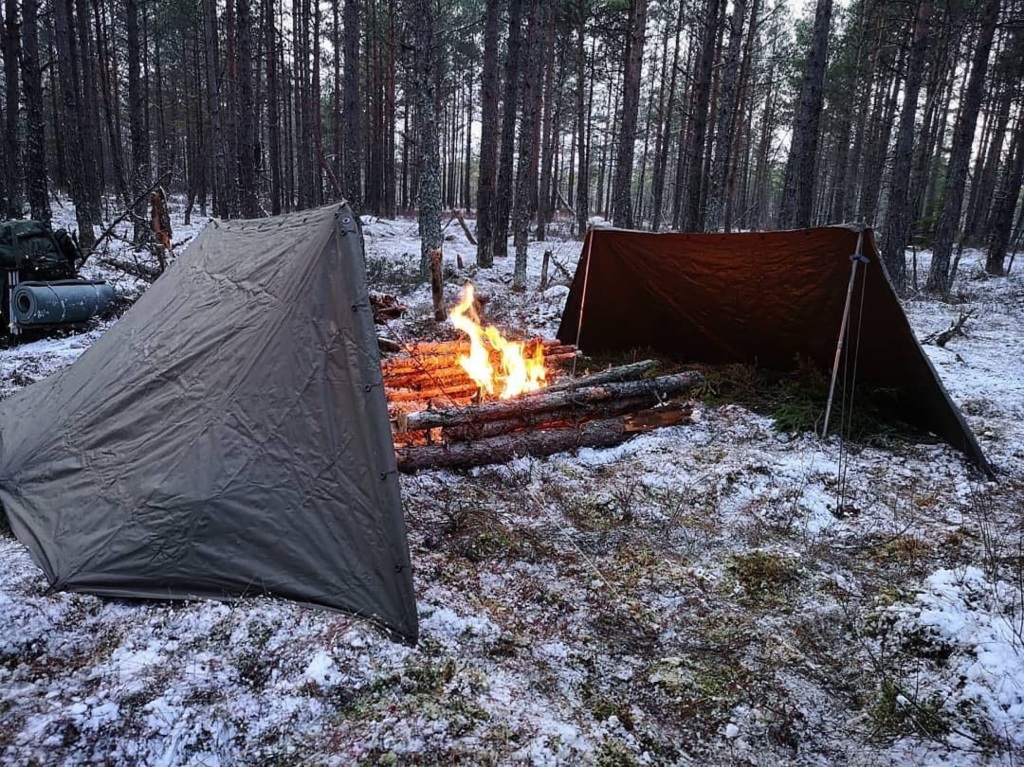
Wood and Fire

With so much evolutionary interaction with fire, one might think we have an instinctual grasp of what to burn for a specific task. Alas, this isn’t the case. A common mistake of novice bushcrafters is the assumption that woods are interchangeable. The“it burns, so I’ll burn it” approach. Mismatches between wood and fire can lead to difficulties and even disasters, so let’s look at common types of fires and their appropriate wood.
Boiling Water

Often, breakfast or lunch in the woods involves a quick meal and then moving on, so you want a quick, hot fire that doesn’t leave difficult-to-extinguish, smoldering coals.
Pine wood is the perfect wood for a fast cup of coffee or bowl of oatmeal before heading out on the trail. Most people understand how flammable it is due to its hot-burning sap and so use it to start other fires. Its low density allows it to be consumed fast by the fire, requiring less precious water to put out. Its main downside for cooking is it does leave a lot of soot on the bottom of cookware. Also, it burns too hot and quickly to leave a bed of coals for frying or grilling foods. Willow and cottonwood burn almost as quickly but produce less smoke and soot.
Cooking Coals

Fish or a steak cooked over hot coals are the foods of Heaven. This requires dense wood that produces hot yet long-lasting coals. Some smoke is desirable as a flavoring agent, but excessive smoke can ruin foods. One other thing to consider is how easy is it to chop or split?

Maclura pomifera
Osage orange is one of the densest and hottest-burning firewood in North America, but it can quickly dull an ax or saw. Better choices are hickory, oak, silver maple, and white ash.
Camp-Smoking Meats

Sometimes, you do want a smoky fire to preserve meat or other foods. This can be accomplished by limiting the oxygen available to a fire, but some woods are naturally heavy smoke-producers. Sugar maple and black maple both produce smokey fires with good flavor, as do assorted fruit trees such as wild apples, plums, or black cherry. This is why these woods are commonly used to smoke bacon.

Note, that smoke can also be used to drive away mosquitoes, flies, and other annoying insects!
Caveman TV

There’s nothing quite like sitting around a fire with friends, solving the world’s problems. It’s ingrained into our core. This sort of fire needs to “talk” to us through aromatic scents and assorted “pops .”Cedar is perhaps the most “talkative” fire, interjecting itself into the conversation with mini-explosions of sparks, sounds, and its own special perfume. Adding a few chunks of Osage orange makes it even better with its own pops, plus assorted coals to poke at with a stick. If you don’t have cedar, pine can substitute, but you will need a lot of pine ready to go due to the speed at which it burns. A LOT of pine! Cottonwood and hickory are two other attention-getting woods.
Cold Weather Survival
A fire burning all night without the need to constantly be fed is the dream of many who wander cold woods. Also, the lack of flying sparks reduces the chance of the fire escaping while unwatched.

Black locust is closest to this magical wood, being very dense, producing lots of slow heat with few dangerous sparks and little smoke. However, it can be more difficult to cut than many other kinds of wood. Honey locust, with its many sharp spines, is almost as good for long-lasting heat and much easier to cut/split than its dark cousin, but its natural weaponry makes handling it a pain. Hickory and oak are the next best choices but will require more feeding through the night.

The better you understand the burn characteristics of your local woods, the better you can pick the right one for the purpose of the fire. Spend some time experimenting, testing the speed, heat, coals, smokiness, etc. Honestly, can you think of many better things to do in the woods?



